A Tale of Two Generals: Cumberland & Cornwallis
Published in 18th–19th - Century History, Features, Issue 3 (Autumn 1999), Volume 7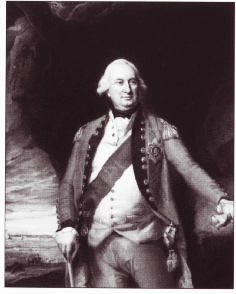
The Duke of Cumberland (Scottish National Portrait Gallery)
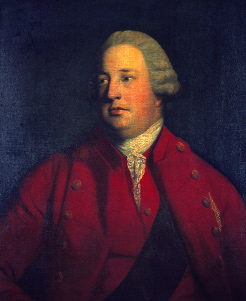
Charles Marquis Cornwallis (Scottish National Portrait Gallery)
Two forces defined the eighteenth-century British state above all else: war and empire. Britain was at war with its continental adversaries, usually France, at some point in every decade except the 1720s. Indeed, during the Seven Years’ War (1756-1763) Anglo-French conflict assumed the character of the first world war: a struggle for the spoils of empire, conducted from the frozen wastes of Canada to the scorched plains of the Indian sub-continent. Similarly, the often British-led resistance against revolutionary and Napoleonic France (1793-1814), with its novel ideological dimension and its unprecedented mobilisation of human and economic resources, can be seen as the first ‘total war’. The costs and exigencies of waging war powered the construction during this period of what John Brewer calls the ‘military-fiscal state’. Modern bureaucracy and the long reach of the tax-collector are rooted, historically, in the imperatives of Anglo-French rivalry. From a different angle, Linda Colley in her book Britons argues that together with a shared Protestantism, a shared antipathy to France and to the French, pressed Scots, Welsh and English into a common British identity. Both acts of union, between England and Scotland in 1707, and between Great Britain and Ireland in 1800, were, in a sense, wartime expedients. Both were firm responses also to challenges to Westminster hegemony within ‘these islands’. If the ‘military-fiscal state’ won, lost, and re-won, a British empire, in which the Scots and Irish participated vigorously as soldiers, civil servants and merchants in far-flung colonies, it rested ultimately on an English empire, and the ‘internal colonisation’ of Ireland and Highland-Gaelic Scotland. From that perspective the Jacobite rebellion of 1745 and the United Irish rebellion of 1798, which are major events in the national histories of Scotland and Ireland, may be viewed as critical episodes in the consolidation of the imperial British state.
Jacobitism
Jacobitism—the belief that the Stuart Pretender remained the sole legitimate king of England, Scotland and Ireland—posed the single greatest threat to the ruling Hanoverian dynasty between 1714 and 1746. The Jacobite constituency consisted of Irish and other Catholics—a small minority in both England and Scotland—loyal to a Catholic line; High Church Tories and non-juring Anglicans, wedded to the doctrines of indefeasible hereditary succession and non-resistance; many, but not all, of the Highland clans; and, most staunchly, Scottish episcopalians, concentrated in Aberdeen and along the north-east coast. Jacobitism may be viewed as a court-in-exile, a conspiracy, a cause, or an underground sub-culture. On two occasions, in 1715 and 1745, it offered direct and formidable military challenges to the Hanoverian regime. Both uprisings were concentrated in Scotland and in the north of England, and both received ineffectual French support. The first was followed by a ‘Disarming Act’ directed towards the rebellious Jacobite clans, and in the longer run by the construction of forts and military roads in the disaffected Highland zone. The second was followed by ‘exemplary brutality’ on a scale rare even in eighteenth-century Europe.
The ‘45 began when Charles Edward Stuart, the ‘Young Pretender’ landed on 23 July with at small expeditionary force on Eriskay in the Western Isles. He raised the standard of rebellion at Glenfinnan and, joined by the Jacobite clans marched on Edinburgh, which he entered on 17 September. Edinburgh Castle, however, remained under Hanoverian control. Four days later the Jacobite army won its first major victory at the battle of Prestonpans where General Cope’s troops were routed by the legendary ‘Highland charge’. The Jacobite army then crossed the border into north-west England, moving swiftly and meeting little resistance, as it occupied Preston, Carlisle and Manchester—which embodied a regiment in the Prince’s cause—before reaching Derby on 4 December. At Derby a divided council of war took the fateful decision to turn back. Meanwhile, a British army, reinforced by troops recalled from Flanders and under the command of the Duke of Cumberland, advanced northwards in pursuit. The Prince’s men re-entered Scotland on 20 December and exactly one week later the Hanoverians began an artillery bombardment of the 350-strong garrison left behind to defend Carlisle. During the siege four Jacobite prisoners were hanged outside the castle, and, when the garrison surrendered after three days intense shelling, prisoners who had earlier deserted to the Pretender’s side at Prestonpans were summarily executed. ‘Cruelty’ remarks one modern historian, ‘was to be used as a policy’. Despite another military victory at Falkirk in January the Jacobites continued to retreat towards the Highland line. The final battle occurred, on 16 April 1746, at Drumrosse moor, near Culloden House, about four miles to the west of Inverness. It lasted less than half an hour as the Highland charge was cut to shreds in hails of grapeshot. In retrospect we can see clearly that the Jacobite cause had suffered decisive defeat, but the ‘great slaughter’, to use Cumberland’s own words, had just begun.
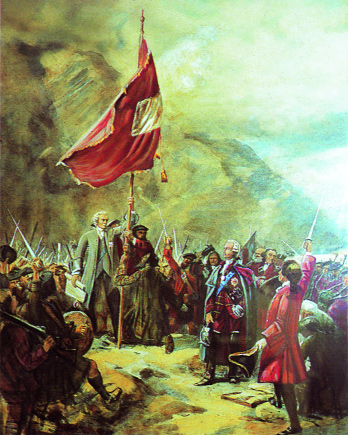
Prince Charles Edward at the raising of the royal standard at Glenfinnan, 19 August 1745. (Jarrold Publishing)
Cumberland
William Augustus, Duke of Cumberland, was the third of the two surviving sons of King George II. Born on 15 April, 1721, his twenty-fifth birthday thus fell on the day before Culloden. A professional soldier, and his father’s favourite, he had been wounded at the battle of Dettingen in 1743, and commanded the British and Hanoverian army at Fontenoy in May 1745, a great French victory in which the Irish Brigade of the French army distinguished itself. Several of the duke’s admirers have testified to his personal courage. Now on the field of Culloden, his hated enemy lying broken before him, qualities other than courage and generalship were put to the test.
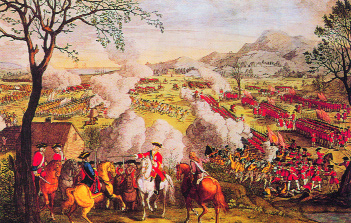
Scene from the Battle of Culloden,
The suppression of Jacobitism after Culloden, over much of which he presided, falls into three phases: the immediate aftermath of the battle; the systematic ‘pacification’ in the days, weeks and months, which followed; and the package of coercive and ‘reformist’ legislation imposed by Westminster between 1746 and 1748.
‘A great slaughter’
The causality figures for Culloden are, of course, imprecise. Cumberland himself estimated that there were 2,000 rebel dead. The Hanoverian army may have suffered as few as fifty fatalities, and another 300 or so wounded.
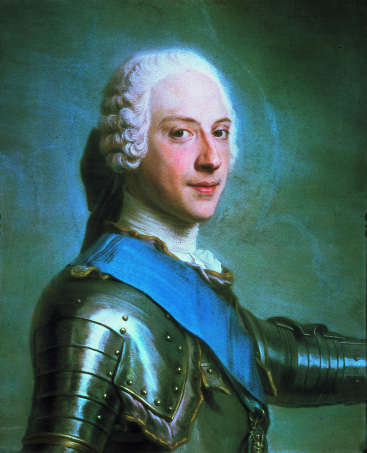
Charles Edward Stewart (Scottish National Portrait Gallery)
Much more revealing, however, than the overall numbers, is the well-attested fact that more Jacobites, including women and children, were slain after the battle than during it. According to a rather jaunty eye-witness account by one of the duke’s soldiers, at the moment of retreat ‘His Royal Highness gave orders…to pursue with the horse (and there was much Knapping of Noddles)…with so good effect that above 500 were killed in the pursuit, and a great many officers and soldiers were taken prisoner’. ‘The rout was universal’, wrote Cumberland two days later, ‘and the cavalry pursued and made a great slaughter, for three miles’. The bodies of the wounded, the dying and the dead were strewn along the road all the way to Inverness. Another Whig-Hanoverian chronicler of these terrible events, Andrew Henderson, confirmed that ‘several of the wounded men were stabbed, yea, some were taken out and shot upon the field, tho’ others were saved’. And for weeks afterwards hundreds of ‘fugitive rebels’ were ‘found dead of their wounds, and thro’ hunger, at the distance of twelve, fourteen or twenty miles from the field of battle’.
Even Henderson acknowledged that ‘the conduct of the soldiers is not to be defended according to the strict rules of war’. Nevertheless, defended it has been. Firstly, it was claimed in mitigation that a copy of Jacobite general orders to give no quarter was recovered from the battle field—a charge vigorously denied by the Jacobites, and secondly, the savagery of the British troops, ‘warm in their resentment’, has been attributed to the heat of combat. Moreover, a telling elaboration of the ‘hot blood’ explanation, stressed the alien character of the Highlander: ‘the rebels had enraged the troops; their habit was strange; their language still stranger; and their way of fighting was shocking to the utmost degree; the rebellion was unprovoked, and the king’s troops had greatly suffered by it; the fields of Preston[pans] and Falkirk were fresh in their memory’.
The line dividing explanation from excuse is sometimes thin. In any event, the ‘heat of battle’ argument cannot be applied to Cumberland’s follow-up operations. Ignoring, or misunderstanding, both the diversity of the Jacobite constituency, and the variety of clan allegiances—the Campbells, after all, had fought on the Hanoverian side at Culloden—Cumberland and his political masters conflated the Jacobite threat with the ‘Highland problem’ and were determined, on this occasion, not to repeat the mistaken leniency of 1716, but to eradicate once and for all the seedbed of sedition. On 17 April patrols were dispatched from Inverness ‘to march immediately to the field of battle, and search all cottages in the neighbourhood for rebels. The officers and men will take notice that the publick orders of the rebels yesterday were to give no quarter’. The incitement is plain. On 19 April the duke was more explicit still, commanding Lord Loudan, stationed on the Isle of Skye, ‘to land with what men you have and can get on some part of the coast where some of those clans inhab[it], who have been in the rebellion, whence you will march to Fort Augustus and in your way drive the cattle, burn the ploughs and destroy what you can belonging to all such as are or have been in rebellion, and burning the houses of the chiefs’.
This ‘scorched earth’ policy, extended to the destruction of Catholic meeting houses and episcopal chapels, the burning of cottages and the arrests of over 3,000 prisoners, many more of whom died of fever and neglect in stinking, overcrowded goals and prison ships, than the 120 or so who died by the hangman’s rope. In fact, the categories singled out for execution were British army deserters, captured members of the Manchester regiment, and those identified as leaders. A more usual fate of those who survived imprisonment was transportation to the colonies. In the longer term work began on the extension of the military roads and the construction of Fort George to garrison the Highlands permanently. A second Disarming Act was introduced, the outward symbols of Highland society, such as the kilt, were prohibited by law, further penal restrictions were imposed on the episcopal church, and parliament sought to break the ‘feudal’ power of the clan chieftains by abolishing heritable jurisdictions.
‘Systematic state terrorism’?
On the face of it an appraisal of the ‘pacification’ of the Highlands, and of Cumberland’s personal—if not sole—responsibility for it, up to his departure for London in mid-July 1746, would appear straightforward. Within weeks of Culloden the duke was nicknamed the ‘Butcher’, and the name stuck, while Allan Macinnes has described the post-Culloden depredations as ‘systematic state terrorism, characterised by a genocidal intent that verged on ethnic cleansing’.
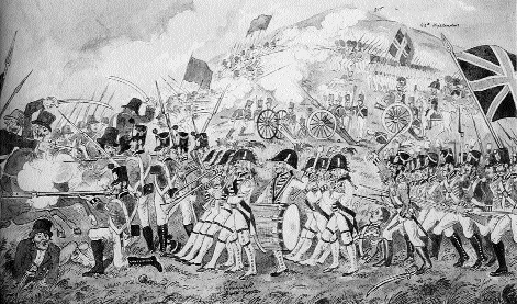
And yet the duke has never lacked apologists. Almost everyone who has looked at these events agree that they have been exaggerated subsequently (but that they were bad—or ‘harsh’—enough anyway). Cumberland’s most recent biographer refers explicitly to ‘Jacobite lies’. Others have entered variations on what might reasonably be called the ‘Nuremberg Defence’: it is not Cumberland (or Cumberland alone) who should be blamed, but rather his political superiors, or his military subordinates, or ‘Hanoverian society’. Most common though is the ‘relativity’ approach: horrific as the aftermath of Culloden undoubtedly was, runs this argument, what happened in Elizabethan Ireland, or seventeenth-century Scotland, or elsewhere in eighteenth-century Europe, was just as bad and perhaps a good deal worse.
If the relativity approach has the merit of offering illuminating comparative perspectives, and obliges the reader to think historically, it also seems to imply that an atrocity stripped of its alleged uniqueness is somehow rendered less foul. Crucially, none of these comparisons have so far been tested in any detail. Is it true, for example, as one of Cumberland’s biographers, Evan Charteris, asserts, that the repression in the Highlands is as ‘water to wine’ when contrasted with Ireland in 1798?
Cornwallis and 1798
It is certainly true that the scale of death and destruction preceding, during and after the Irish rebellion far surpassed the horrors of 1746; and there is nothing to distinguish the behaviour of the troops after the battles of Vinegar Hill or Ballinamuck from the actions of the soldiers at Culloden. Instances of what Macinnes terms ‘state terrorism’ are not difficult to compile; Carlow United Irishman, William Farrell’s, testimony is not unusual. In prison he witnessed a fellow rebel ‘hanged till quite dead, when his head was cut off and kicked about the barrack-yard and then put on a spike’. A United Irish leader, Charles Hamilton Teeling, recalled the crowded jails and tenders and ‘on the highways and bridges…exhibited, in terrorem populi, the scaffolds of death’. Like Scotland in 1745-6 the ferocity unleashed in Ireland in 1798 owed much to the fact that the rebellion was also a kind of civil war, and to the distinction, which the crown forces clearly made between (illegitimate) rebels and (legitimate) combatants. Whereas the fleeing clansmen at Culloden and the insurgents at Ballinamuck were cut down by cavalry, in both cases captured French soldiers were treated as bona fide prisoners of war, and returned fairly promptly to France.
However, the differences between ‘98 and ‘46 are as significant as the similarities, and it is because of the differences that Charteris’s comparison is misleading and ultimately damming to his hero, Cumberland. General Lake, who carried out the ‘dragooning’ of Ulster in 1797, who took command towards the close of the campaign in Wexford, and who commanded also at Ballinamuck, was a ruthless soldier, not averse to extra-legal methods in the Cumberland mode; but the commander-in-chief (and lord lieutenant) in Ireland from 20 June 1798, Charles, Marquis Cornwallis, demonstrated that even in the eighteenth century, and even in respect of rebellion against the lawful sovereign, there could be another way. At age sixty Cornwallis was an experienced and able soldier, politician and administrator who had seen service in India, America and on the continent. The state of affairs in Ireland disgusted him. A week after his arrival in Dublin he informed the ministry in London that:
The accounts that you see of the numbers of the enemy destroyed in every action, are, I conclude, greatly exaggerated; from my own knowledge of military affairs, I am sure that a very small proportion of them only could be killed in battle, and I am much afraid that any man in a brown coat who is found within several miles of the field of action, is butchered without discrimination.
His estimate of the troops under his command was devastating:
The Irish militia are totally without discipline, contemptible before the enemy when any serious resistance is made to them, but ferocious and cruel in the extreme when any poor wretches either with or without arms come within their power; in short murder appears to be their pastime.
The Yeomanry had ‘saved the country’ but took the lead in ‘rapine and murder’; the Fencibles too had their share in ‘murder and every kind of atrocity’. And if ‘Hanoverian society’ can be held responsible for Cumberland’s excesses, Cornwallis, admittedly with the support of his political superiors, firmly resisted local political pressure to continue or escalate the campaign of repression. ‘The conversation of the principal persons of the country’, he wrote, ‘all tend to encourage this system of blood.’
Cornwallis, on the contrary, determined on a policy of measured severity towards the United Irish leadership and clemency towards the ‘deluded’ rank-and-file; he worked to restore military discipline and to moderate the operation of martial law, intervening directly, usually on the side of the prisoner, in scores of court martial trials This amounted to an immediate response to an immediate crisis. In the longer term, as a servant of empire, he viewed Ireland as a strategic weak-link on Britain’s exposed western flank, and from that standpoint the most troubling aspect of 1798 had been the involvement of the French. In the interest of imperial security he therefore sought, as a matter of urgency, to remove the underlying causes of rebellion, thereby reducing opportunities for French intrigue. Cornwallis hoped to conciliate the majority Catholic population by accompanying the Act of Union—another wartime security measure—with Emancipation. However he underestimated the political skill, though not the virulence, of the opponents of Catholic Emancipation, and the union came into force without it.
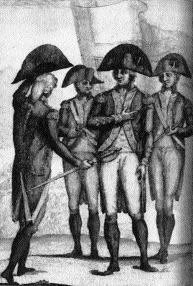
Humbert’s surrender-whereas the fleeing clansmen at Culloden and the insurgents at Ballinmuck were cut down by cavalry, in both cases captured French soldiers were treated as bona fide prisoners of war, and returned fairly promptly to France. (Walker’s Hibernian Magazine, September 1798)
Nevertheless 1798, like 1745-6, was followed by major legislative ‘reform’ more closely integrating the ‘Celtic peripheries’ into the British state. The two rebellions had another connection which locates them in a shared British context. By 1767 when Fort George had been completed Jacobitism no longer posed a military threat. It stood rather as a symbol of the consolidation of the Anglo-Scottish union and the Hanoverian regime. But it would eventually be pressed into service against rebellion: as a prison for the United Irish leaders after 1798.
Jim Smyth is Professor of Irish History at the University of Notre Dame.
Further reading:
B. Lenman, The Jacobite Risings in Britain, 1689-1746 (Aberdeen 1995).
G. Parker, ‘Early Modern Europe’ in M. Howard, G.J. Anreopolous and M.R. Shulman (eds.), The Laws of War: constraints on warfare in the western world (New Haven and London 1994).
C. Ross (ed.), Correspondence of Charles, First Marquis Cornwallis (London 1851).
















